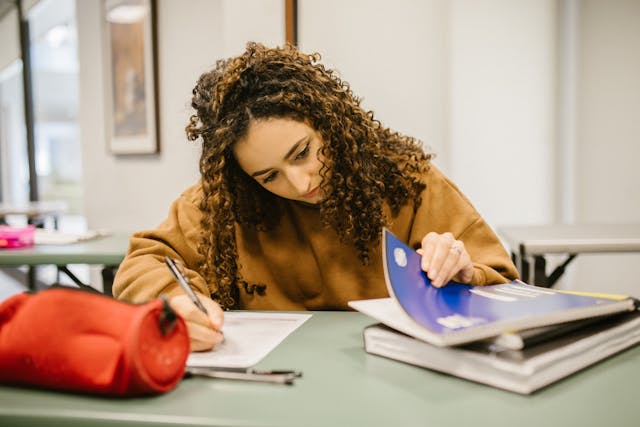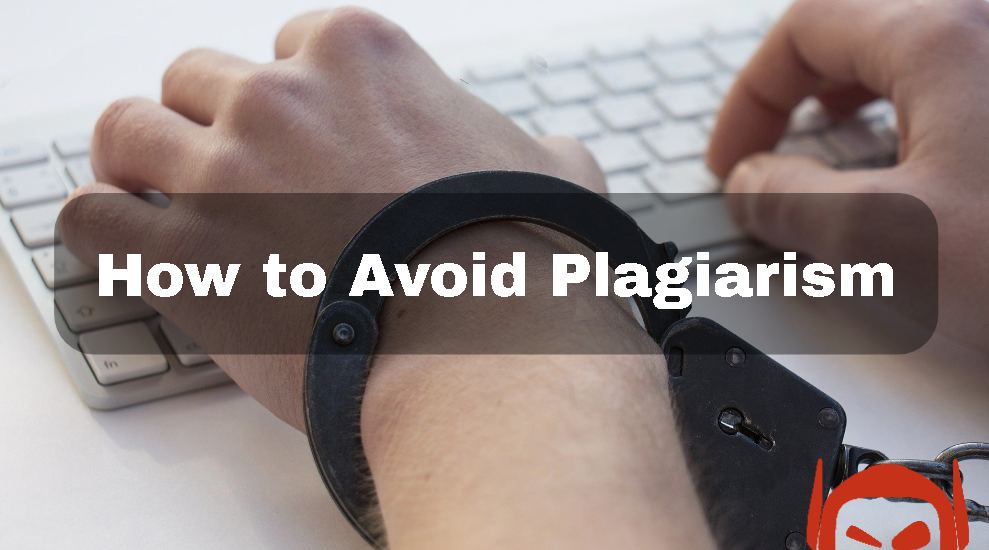Simply put, plagiarism happens when you use someone else’s ideas as your own without giving credit. Learning how to avoid plagiarism not only protects your work’s integrity but also helps you maintain originality.
Academic and professional settings take plagiarism seriously, and it often carries consequences. However, not all plagiarism is intentional, which makes understanding its impact essential for avoiding accidental mistakes.
When working on a research paper, report, or other writing, it’s common to draw from existing studies or popular ideas. Without proper citations, these influences can lead to unintentional plagiarism. Let’s explore how to avoid plagiarism while still using valuable information responsibly.

What Is Plagiarism?
Plagiarism is the act of copying, duplicating, or misrepresenting someone else’s work as your own. This can mean failing to cite the original source, leaving out quotation marks, or even summarizing someone’s ideas without credit.
Common types of plagiarism that students may face include:
- Direct plagiarism: Copying text word-for-word without quotes or citations.
- Paraphrasing plagiarism: Rephrasing ideas from a source without citation.
- Self-plagiarism: Reusing your previous work without permission or citation.
Plagiarism doesn’t just happen in academic writing. It can appear in creative fields, professional projects, and even public speeches. It’s important to understand what happens if you copy someone else’s work and how to avoid it.

Why Avoid Plagiarism?
Plagiarism can seriously affect academics, careers, and even legal settings. Avoiding plagiarism is critical for:
- Maintaining integrity: Trust is crucial in research and creative fields.
- Avoiding penalties: Schools and workplaces may penalize plagiarism.
- Improving skills: Proper citations show thorough research and help you develop your voice.
Learning how to avoid plagiarism as a student is especially important to prevent serious consequences and support your learning
Ways To Avoid Plagiarism
So you’re wondering, “How do I avoid plagiarism?” Thankfully, there are strategies to avoid plagiarism to ensure your work stays original.
Below, we’ll cover six effective ways to avoid plagiarism so you can confidently create unique content and properly credit others.
1. Use a Plagiarism Checker
Plagiarism checkers are crucial for maintaining academic integrity, especially for students and teachers seeking reliable tools to identify unoriginal content. A reliable plagiarism checker helps identify duplicate content before you submit your work.
Smodin’s plagiarism checker makes it easy to spot potential plagiarism. Upload your document or paste your text, and the tool will flag sections needing attention. This helps you see how to avoid plagiarizing without missing citations.
If you need a specific type of citation to avoid plagiarism, MLA citation generators are also available to simplify the process. In the example below, we included a quote from The Old Man and The Sea by Ernest Hemingway without quotes or citations. As you can see, it returned 44% plagiarized.

2. Organize and Cite Your Source
Organizing sources early is crucial for proper citation. A personal statement layout or a clear bibliography system ensures easy access to references. Tools like our citation machine make creating accurate citations easy, helping you add references correctly from the start.
Understanding why citing sources is essential helps guarantee accuracy from the start.
3. Employ Quotations Correctly
Place quotation marks around direct quotes to show they’re not your own words. Citing these accurately credits the original author, adding credibility to your research.
4. Learn to Paraphrase
If you find paraphrasing challenging, using a text rewriter can help you transform existing content into original text while keeping the meaning intact. These tools assist in restructuring sentences and refining wording, ensuring that your writing flows naturally and remains plagiarism-free. However, it’s essential to use them wisely — always review and tweak the output to maintain accuracy and align with your personal writing style.
Paraphrasing is more than rephrasing words; it’s about expressing an idea in your own way. How can we prevent plagiarism through paraphrasing? First, fully understand the concept, then write it in your own words. Here’s an example: we paraphrased a summary of The Old Man and The Sea, which returned 0% plagiarism. When paraphrasing, include citations to stay accurate.

5. Use AI Tools Responsibly
AI tools can simplify writing, but using them responsibly is essential. Understanding how AI and plagiarism relate means avoiding over-reliance on AI-generated content. Instead, use AI for brainstorming or structuring ideas, and always review AI-generated text in your own words. Practicing these steps helps ensure originality and teaches you how to avoid AI plagiarism effectively.
If you’re looking for a quick way to get ideas flowing, an AI research paper generator can be a handy tool to help you sketch out your thoughts. Just remember, it’s best to treat it like a first draft — you’ll want to add your own voice and tweak things so it really sounds like you. That way, you save time but still keep your work original and personal.
6. Present Your Own Idea
Bring your own insights to the table. Drawing from personal experiences, thoughts, or even common knowledge topics helps prevent reliance on outside sources. This approach adds originality, ensuring your work remains uniquely yours.
How To Avoid Self Plagiarism
Self-plagiarism happens when you reuse your past work without citing it. To avoid self-plagiarism, only reuse content if allowed, and always provide a citation when necessary. When in doubt, check guidelines to make sure you’re following them correctly.
How To Avoid AI Plagiarism
AI tools make creating content easier, but they can cause plagiarism if you don’t personalize the results. Understand how AI detects plagiarism, and make sure to add your own voice and ideas to the generated content.

How To Fix Plagiarism
Writing a master piece content with AI tools makes life more convenient and time efficient. However, this does not guarantee originality, and plagiarism might become a concern if not properly addressed. It’s important to always make sure that every sentence of your work remains authentic and complies with the rules.
So, that raises a question: “How do you avoid plagiarism in your final drafts?” Start by carefully reviewing flagged text in your AI checker and plagiarism detection tool. Add quotation marks to each flagged section with a direct quote, and double-check that all sources have citations. This process helps keep your work unique and well-referenced, even when using others’ ideas.
How To Avoid Plagiarism With Smodin
Avoiding plagiarism doesn’t have to feel overwhelming, especially with the right tools at your fingertips. Smodin’s resources simplify the process for students, professionals, and anyone aiming to maintain originality in their work. From understanding how to avoid plagiarism in research papers to adding accurate citations, Smodin’s tools will guide you along the way.
Keep plagiarism out of your work with ease and confidence. Ready to keep your work original and well-cited? Start with Smodin’s plagiarism checker and citation machine today!

FAQs
What is the simplest way to prevent plagiarism?
Using a plagiarism checker helps ensure originality by identifying any duplicate text before submitting your work.
Can plagiarism be an accident?
Yes, accidental plagiarism can occur if you forget to cite or unknowingly repeat phrases. Double-check citations carefully.
How do you detect plagiarism?
Most plagiarism checkers compare your text to a vast database, flagging matches. Understanding how these checkers work helps you catch unintentional plagiarism before submitting.
